How to Fix ‘DAE Error 13001’ in Pro Tools
Some Windows users are encountering the Dae Error 13001 every time they attempt to use the Pro Tools on their computer. This problem is confirmed to occur on Windows 7, Windows 8.1, and Windows 10.
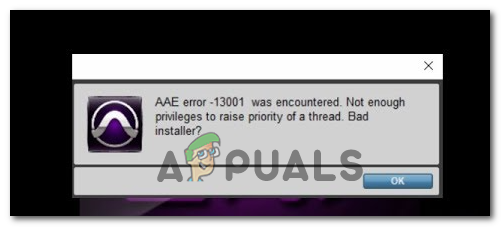
After investigating this particular issue, it turns out that this problem is actually caused by a permission issue:
- The main executable might not have admin access to call upon some dependencies needed by the Pro Tools app.
- The Pro Tools installed didn’t run with admin access, so some application modules didn’t get installed properly.
If you’re seeing the DAE 13001 error code when opening the Pro Tools app, there are a few methods confirmed by other affected to fix the problem
Method 1: Launching with admin access
If you’re encountering this error immediately after you double-click the launcher, you should consider the fact that you might be dealing with a permission issue.
It’s likely that PRO Tools doesn’t have admin access to call upon all dependencies – This problem is mainly restricted on Windows 7 and Windows 8.1 since Windows 10 is way better with permissions.
If you suspect that this scenario is applicable, you should start troubleshooting by ensuring that the main Pro Tools executable is launched with admin access. In case you don’t know how to do this, follow the instructions below:
- Right-click on the main Pro Tools executable and choose Run as Administrator from the newly appeared context menu.
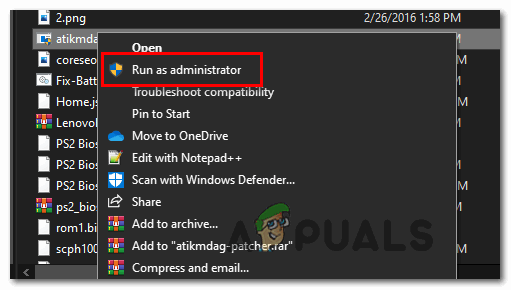
Running Executable as administrator - When you’re prompted by the UAC (User Account Control), click Yes to grant access, see if the same error code returns.
- If the problem doesn’t occur anymore, you just confirmed that you were previously dealing with a permission issue.
Note: Unless you want to repeat the steps above every time you launch Pro Tools, follow the instructions below to ensure the DAE Error -13001 doesn’t return again. - Right-click on the executable and choose Properties from the newly appeared context menu.

Right-clicking and selecting “Properties”. - Once you’re inside the Properties screen, choose the Compatibility tab from the horizontal menu at the top, then move down to the Settings section and check the box associated with Run this program as administrator.
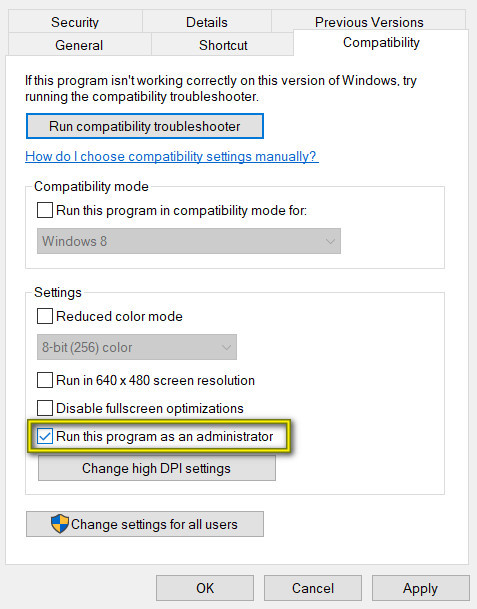
Run this program as an administrator - Click Apply to save the changes, then launch Pro Tools conventionally (by double-clicking) and see if the problem is now resolved.
If the same DAE Error -13001 is still occurring, move down to the next potential fix below.
Method 2: Running Pro Tools in Compatibility mode
Keep in mind that in case you’re using an older Pro Tools build, keep in mind that this particular iteration might not be optimized for Windows 10.
If you’re using a version of this type, you have two ways forward:
- You can install a more recent version of Pro Tools
- You can force your current version of Pro Tools to run in compatibility mode
If you chose to utilize Compatibility mode, follow the instructions below to run the main Pro Tools executable in Compatibility mode with Windows 7 or Windows 8.1:
- Navigate to the executable that is triggering the error, right-click on it, and choose Properties from the context menu.
- Once you’re inside the Properties screen, click on the Compatibility tab from the menu at the top, then check the button associated with Run this program in compatibility mode.
- After you do this, select Windows 7 or Windows 8.1 using the drop-down menu associated with compatibility mode and click Apply to save the changes.
- After the changes have been saved, launch the Pro Tools once again and see if you can use the app without encountering the DAE error -13001.
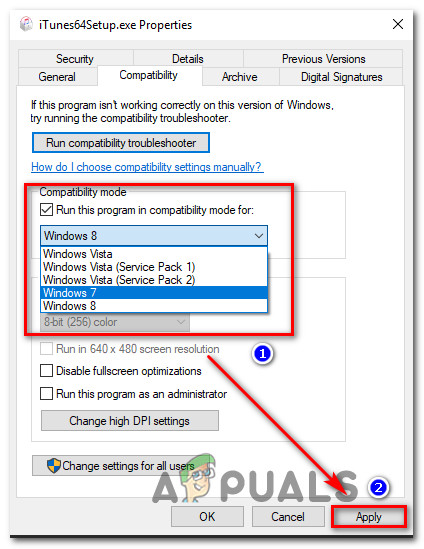
In case the problem is still not resolved, move down to the next potential fix below.
Method 3: Reinstalling Pro Tools with Admin access
If none of the fixes above have worked for you, it’s likely that you’re dealing with a bad Pro Tools installation brought about by insufficient permissions. Under certain circumstances, the Pro Tools installation might be unable to copy over every dependency if not granted admin access.
If this scenario is applicable, you should be able to fix the problem by uninstalling the current Pro Tools installation and then ensuring that you’re installing the latest version with admin access.
Here’s a quick guide on how to do this:
- Press Windows key + R to open up a Run dialog box. Next, type ‘appwiz.cpl’ inside the text box and press Enter to open up the Programs and Features menu.

Type appwiz.cpl and Press Enter to Open Installed Programs List - Once you’re inside the Programs and Features menu, scroll down through the list of installed programs and locate your Pro Tools installation.
- When you see it, right-click on it and choose Uninstall from the newly appeared context menu.
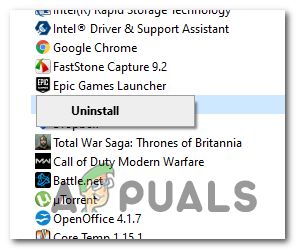
Uninstall Program in Programs and Features - Inside the uninstallation screen, follow the on-screen instructions to complete the uninstallation process. Next, restart your computer and wait for the next startup to complete.
- Next, return to the download page of Avid and download the latest version of Pro Tools that you have a license for.
- Once you have successfully downloaded the installation executable, don’t open it. Instead, navigate to the location where you downloaded it, right-click on it and choose Run as Administrator.

Running Executable as administrator - When you’re prompted by the UAC (User Account Control), click Yes to grant admin access.
- Follow through with the rest of the installation instructions, then restart your computer at the end of it.
- Launch Pro Tools normally once the next startup is complete and see if the DAE 13001 error is resolved.





